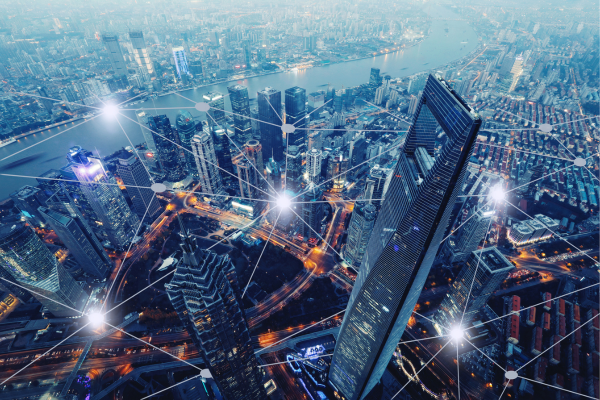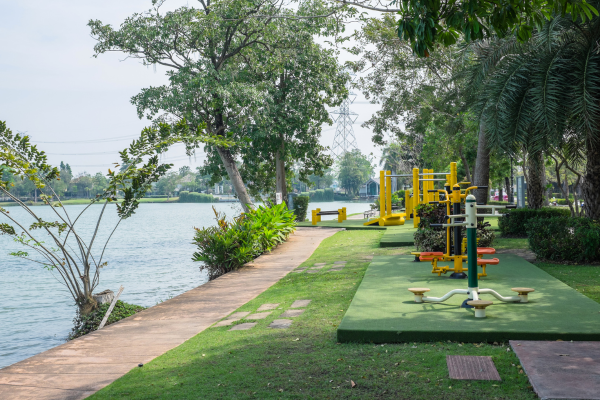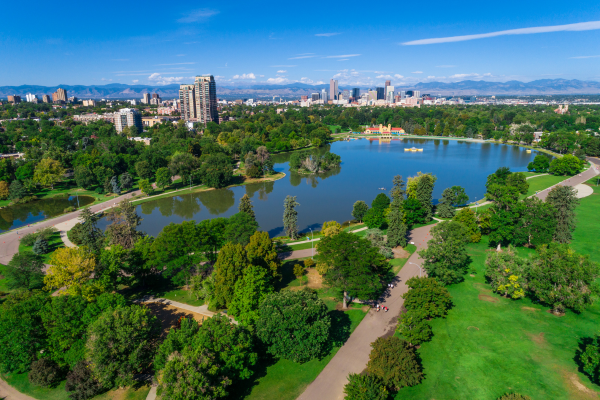.png)
Redefining Cities for a Changing World
Amid the neon lights and relentless rhythm of bustling streets, cities have long stood as testaments to humanity's ambitious spirit. They are marvels of architecture, hubs of culture, and epicenters of commerce. But as the decades have rolled on, and as we've grappled with unprecedented challenges like climate change, population growth, and rapid technological advancements, it's become evident that our urban environments are in flux. This transformation has sparked a pressing question: How do we rethink our city infrastructure to suit a world constantly changing?
It's not just a question of aesthetics or convenience; it's about sustainability, resilience, and the very quality of urban life. With over half of the world's population now residing in cities and that number only projected to grow, our choices will shape the lived experiences of billions in the future.
Adapting to Environmental Changes
The grand tapestry of human achievement showcases our cities as gleaming beacons of innovation and adaptability. Towering skylines, complex roadways, and vibrant neighborhoods resonate with our enduring spirit and drive. Yet, as we celebrate these urban marvels, the reality is that the ground beneath is changing. Climate change, an imminent challenge, beckons us to act with urgency and foresight.
Climate change isn't a distant specter; it's an immediate challenge, and our coastal cities feel its impact acutely. Rising sea levels, escalating temperatures, and unpredictable weather events compel a profound reevaluation of urban planning.
.png)
Take the aftermath of Hurricane Sandy in New York City, for example. While the floodwaters have long receded, the lessons remain deeply ingrained. This natural calamity signaled the dawn of resilient urban design. Architects, planners, and city officials came together, envisioning elevated parks, storm-resistant structures, and coastlines designed to embrace and protect rather than merely delineate.
But the response extends beyond reacting to past events; it's about proactive adaptation. Cities worldwide champion the cause of green infrastructure. Permeable pavements now dot urban landscapes, reducing the risk of flooding, and buildings crowned with green roofs counteract soaring temperatures. These initiatives address the urban heat island effect and are essential for water retention during heavy rainfalls.
We gather knowledge, embrace growth, and continually evolve through this ever-evolving journey. The challenges posed by environmental shifts seem daunting but manageable. Armed with innovation, collaborative spirit, and reverence for our planet's equilibrium, we are molding a future where our cities flourish and not just survive.

Embracing Technological Innovations
As cities continue to pulse with life and energy, there's another force at play, quietly weaving its magic into the urban fabric: technology. The rhythm of the digital revolution is echoing through our streets, reshaping our perceptions and defining a new era of urban infrastructure.
The concept of a 'smart city' once seemed like a page taken out of a futuristic novel. Today, it's our reality. Discreetly embedded across urban landscapes, sensors capture invaluable data that flows like the city's lifeblood. This constant stream of information empowers city officials, guiding them toward informed decisions. Whether it's managing the ebb and flow of traffic in real-time or keeping a vigilant eye on air quality levels, technology is ensuring our cities are efficient, adaptable, and health-conscious.
And as we stand on the cusp of the autonomous vehicle revolution, our roads, too, are gearing up for transformation. Self-driving cars, once the stuff of dreams, are nudging closer to becoming everyday companions. Their increasing presence may reduce the demand for sprawling parking lots, giving urban planners a golden opportunity. Imagine reclaiming vast expanses of concrete jungles, transforming them into green spaces, recreational zones, or innovative public installations. The possibilities are as endless as they are exciting.
Yet, the embrace of technology isn't just about grand transformations. It's also about enriching the minutiae of daily life. Public Wi-Fi zones, interactive information kiosks, and even app-driven public services make city living more seamless, connected, and vibrant.
Diving headfirst into this technological renaissance, cities are discovering novel ways to enhance the lives of their residents. By intertwining the marvels of modern tech with the age-old tenets of urban planning, we are setting the stage for cities that are smarter, more empathetic, responsive, and attuned to the needs of their ever-evolving populace.

Prioritizing Public Spaces
Cities have always been more than just a huddle of buildings and roads. At their heart lies a profound commitment to the community, an unspoken promise to provide spaces that breathe, inspire, and connect. As urban landscapes continually evolve in response to shifting paradigms, public spaces emerge as the quintessential anchors, holding communities together and fostering a spirit of collective belonging.
The role of public spaces in urban environments cannot be understated. Historically, they've been the stage upon which societal narratives play out, from grand celebrations and artistic expressions to poignant moments of collective introspection. These spaces have taken on even greater significance amid the rush of urbanization and technological infusion.
Urban planners and visionaries understand the therapeutic allure of open spaces. Green parks interspersed amidst concrete high-rises offer a respite to city dwellers, serving as havens to reconnect with nature, even momentarily. These green pockets are more than aesthetic delights; they're essential for mental well-being, allowing urbanites to pause, reflect, and rejuvenate.
Equally compelling is the drive to cultivate spaces that foster community interaction. Plazas, courtyards, and pedestrian promenades are consciously designed to encourage casual strolls, spontaneous encounters, and meaningful exchanges. In an age where digital connections often overshadow physical interactions, such spaces remind us of face-to-face conversations' sheer joy and uncertainty.
But there's also an economic dimension to prioritizing public spaces. Vibrant and well-maintained areas become magnets for tourism, stimulate local businesses, and elevate property values. They testify to a city's commitment to its residents and dedication to enhancing urban life quality.
In this ongoing quest to sculpt cities that resonate with the needs and aspirations of their inhabitants, public spaces stand out as the soulful touchpoints. They are the echoes of a city's history, the canvas of its present, and the blueprint for its future, intricately woven into the urban narrative, ensuring cities remain alive, pulsating, and profoundly human.

Considering Inclusivity
Diversity is more than just a buzzword; it's the lifeblood that infuses vitality into our urban centers. As cities stretch and grow, so does their tapestry of inhabitants, each thread bringing its own rich hue to the larger picture. Yet, for a city to truly thrive, its design and infrastructure must not only appreciate but also cater to this vast spectrum of experiences, needs, and aspirations.
In the heart of urban design lies a responsibility: to ensure that every individual, regardless of age, ability, or socio-economic background, feels seen, heard, and valued. This responsibility drives city planners, architects, and policymakers to delve deeper, asking probing questions about access, mobility, and representation.
Take, for instance, the elderly population, a demographic that is steadily increasing globally. Designing cities that consider their specific needs means rethinking everything from pavement textures and crosswalk timings to the placement and design of public seating. Likewise, ensuring that buildings and public transport are accessible to individuals with physical disabilities is not a mere afterthought; it's a fundamental requirement.
Additionally, it's vital to remember that inclusivity is as much about culture and community as it is about physical accessibility. Urban areas that encourage cultural expression, be it through festivals, dedicated spaces, or community-driven initiatives, not only enrich their social fabric but also foster a sense of belonging and unity. Celebrating the myriad of festivals, cuisines, art forms, and traditions that diverse communities bring to a city ensures that every resident feels at home, no matter where they originally hailed from.
Economic inclusivity also plays a pivotal role. As cities burgeon and property values soar, the risk of marginalized communities feeling alienated or displaced becomes real. Herein lies the challenge and opportunity for urban developers: Creating affordable housing solutions. Ensuring equitable access to amenities. Championing initiatives that spur local entrepreneurship and community upliftment.
In the vast symphony of urban growth and development, the notes of inclusivity ensure harmony and resonance. By weaving inclusivity into the very DNA of urban planning, we aren't just building cities; we're nurturing diverse, vibrant, and cohesive communities, celebrating humanity in all its glorious facets.
Looking Ahead
As we stand on the brink of a new era of urban evolution, it's clear that our cities must be both adaptable and resilient. The challenges of the 21st century are multifaceted, from environmental crises to technological revolutions. But with challenge comes opportunity.
Rethinking urban infrastructure for a world in flux is about more than just responding to immediate threats. It's about envisioning a future where cities are not just places of residence but thriving ecosystems of culture, commerce, and community. It's about creating spaces that, despite their ever-evolving nature, always feel like home.
By harnessing innovative design, technology, and a commitment to inclusivity, we can ensure that our urban futures are sustainable and vibrant. As the world changes, so too will our cities. But with thoughtful planning and a forward-thinking mindset, they can change for the better, offering hope and a high quality of life for all their inhabitants.
From BIM to budget, get precise estimates instantly with Bidlight! ➡️ www.bidlight.com
